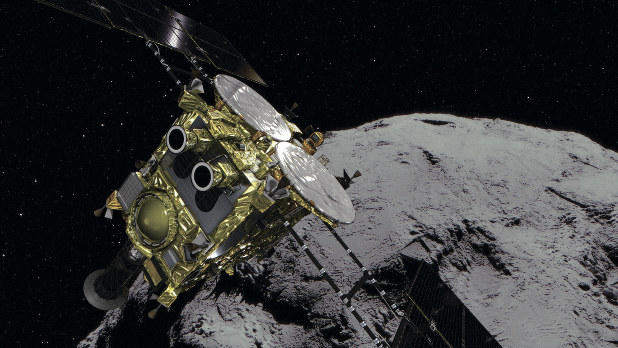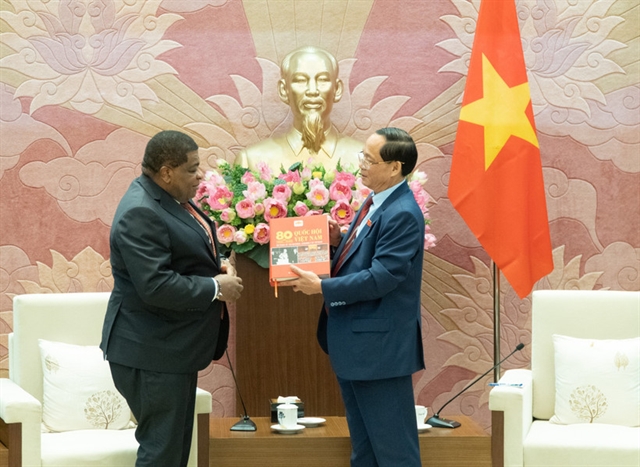 World
World


|
| This supplied computer graphic shows image of Hayabusa2 space probe and the Ryugu asteroid.— KYODO/VNA Photo |
TOKYO — Japan's space agency said on Wednesday its Hayabusa2 space probe has departed from an asteroid which it landed on to collect samples and will make its return to Earth in November or December next year.
The probe's return, previously scheduled to start by the end of this year, was brought forward after it successfully accomplished its planned tasks, departing from the Ryugu asteroid at 10:05 am, the Japan Aerospace Exploration Agency said.
Its early departure will provide enough time for the agency to prepare for the release of a capsule carrying samples to Earth, JAXA said.
Hayabusa2 will initially travel away from Ryugu at a speed of 10 centimetres per second, continuing to take images of the asteroid as it retreats.
Around November 18, the space probe will adjust its posture once its distance from Ryugu reaches 65 kilometres where it is out of the asteroid's gravitational pull.
The probe will then test the ion engine, its main source of power, through December 2 before accelerating.
"All of us are satisfied and have no complaints with what we accomplished," the probe project manager Yuichi Tsuda said in a briefing the previous day. "We're grateful to the Ryugu asteroid and are honestly sad about leaving it."
JAXA's mission manager Makoto Yoshikawa said, "We were able to learn from the numerous mistakes experienced with the first Hayabusa."
Launched in December 2014 from the Tanegashima Space Center in southwestern Japan, Hayabusa2 reached Ryugu in June last year.
The probe touched down on Ryugu twice and succeeded in collecting the first-ever asteroid subsurface samples after creating an artificial crater by shooting a copper projectile at the asteroid.— KYODO




